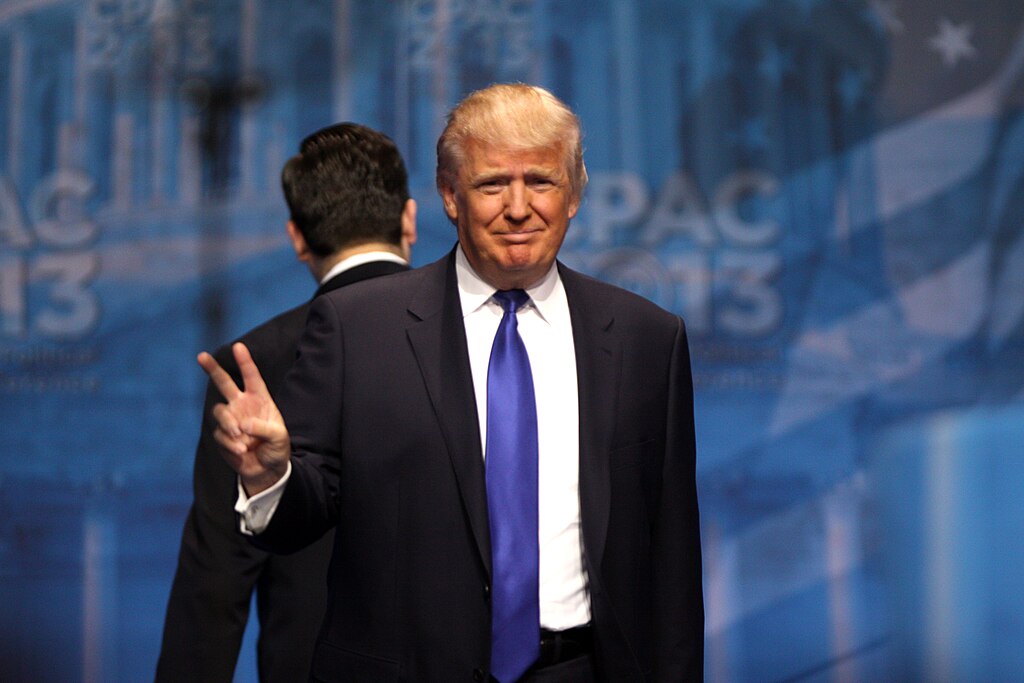President-elect Donald Trump has revealed an ambitious strategy to combat online misinformation in 2025, marking one of the first initiatives of his second term. The plan, which aims to regulate the flow of digital information on major platforms, has drawn both applause and skepticism, igniting debates over freedom of speech and the role of technology giants in shaping public discourse.
Trump’s proposal includes establishing a Federal Digital Integrity Task Force, which will work in tandem with private companies like Meta and X (formerly Twitter) to identify and address false narratives. While Trump emphasized the need for accurate information to protect democracy, critics argue the plan could pave the way for government overreach into personal freedoms.
“America deserves truth, not lies,” Trump said during a speech in Washington, D.C., outlining his vision for a digitally transparent society. However, critics warn that the initiative may dangerously blur the lines between regulation and censorship.
Key Components of Trump’s Misinformation Policy
The cornerstone of Trump’s policy is the creation of a National Digital Verification System (NDVS), which aims to fact-check viral claims within minutes using artificial intelligence. This system will require social media companies to collaborate with the government and independent watchdogs to label or remove false information.
Additionally, Trump’s administration plans to impose fines on platforms that fail to address flagged misinformation swiftly. The initiative also includes educational campaigns targeting media literacy, particularly among young people, with an emphasis on teaching critical thinking skills.
Yet, the plan has sparked a wave of controversy. Civil liberties advocates argue that penalizing platforms for hosting misinformation could lead to over-correction, silencing legitimate dissent. Small businesses and independent creators worry that stricter content moderation could disproportionately impact their ability to operate online.
Public Reaction: Praise, Criticism, and Outrage
As the news spread, reactions on social media highlighted the polarized sentiment surrounding Trump’s proposal:
- @FreeSpeechDefender: “Trump’s plan is terrifying. Who decides what’s true? This is just the government trying to control us!”
- @TruthMatters123: “Finally, a bold move to tackle the misinformation epidemic. It’s about time someone held Big Tech accountable.”
- @DigitalLibertyNow: “This will kill online innovation. Small creators can’t afford to comply with Trump’s draconian rules!”
- @AIwatchdog: “AI fact-checking is unreliable. We need humans, not algorithms, deciding what’s true or false.”
- @ParentsForTruth: “If this stops lies about vaccines, I’m all for it. Misinformation is destroying our health system.”
- @ElectionObserver: “Censorship disguised as regulation. Trump’s government wants to control what we read and think!”
The Challenges Ahead
Trump’s ambitious plan raises significant questions about implementation and oversight. While supporters argue the initiative is a necessary step in curbing misinformation’s harmful effects, critics warn that unchecked power in the hands of the federal government could lead to abuse. Moreover, ensuring AI systems are fair, unbiased, and transparent presents a complex challenge.
The plan also risks deepening political polarization, with Democrats accusing Trump of attempting to suppress opposition voices. To gain bipartisan support, Trump’s administration will need to address concerns about fairness and overreach.



 China Welcomes First Step Toward Russia-U.S. Peace Talks, Urges Continued Dialogue
China Welcomes First Step Toward Russia-U.S. Peace Talks, Urges Continued Dialogue  Trump Administration Reviews $9 Billion in Harvard Funding Amid Antisemitism Crackdown
Trump Administration Reviews $9 Billion in Harvard Funding Amid Antisemitism Crackdown  U.S. and Russia Begin Rare Earth Metals Cooperation Talks Amid Global Competition
U.S. and Russia Begin Rare Earth Metals Cooperation Talks Amid Global Competition  U.S. Imposes Visa Restrictions on Chinese Officials Over Tibet Access
U.S. Imposes Visa Restrictions on Chinese Officials Over Tibet Access  Trump Warns Iran of Bombing and Tariffs Over Nuclear Standoff
Trump Warns Iran of Bombing and Tariffs Over Nuclear Standoff  U.S. Treasury Withdraws Climate Risk Guidance for Banks Under Trump
U.S. Treasury Withdraws Climate Risk Guidance for Banks Under Trump  Japan's Finance Minister Emphasizes U.S. Coordination on Forex Stability
Japan's Finance Minister Emphasizes U.S. Coordination on Forex Stability  Cantor Analysts Urge Firing of RFK Jr. Over Anti-Vaccine Stance Amid HHS Shake-Up
Cantor Analysts Urge Firing of RFK Jr. Over Anti-Vaccine Stance Amid HHS Shake-Up  Japan Urges U.S. to Exempt Auto Tariffs Amid Economic Concerns
Japan Urges U.S. to Exempt Auto Tariffs Amid Economic Concerns  Greenland Strengthens Denmark Ties Amid Push for Independence
Greenland Strengthens Denmark Ties Amid Push for Independence  Elon Musk Donates $1M to Boost Conservative Candidate in Key Wisconsin Court Race
Elon Musk Donates $1M to Boost Conservative Candidate in Key Wisconsin Court Race  French Court Bars Marine Le Pen from 2027 Presidential Run over Embezzlement Conviction
French Court Bars Marine Le Pen from 2027 Presidential Run over Embezzlement Conviction  Taiwan Prepares for U.S. Tariffs as Lai Urges Swift Contingency Measures
Taiwan Prepares for U.S. Tariffs as Lai Urges Swift Contingency Measures  EU Ready to Hit Back if U.S. Imposes New Trade Tariffs, Says von der Leyen
EU Ready to Hit Back if U.S. Imposes New Trade Tariffs, Says von der Leyen  Democrats Sue Trump Over Executive Order on Voting System
Democrats Sue Trump Over Executive Order on Voting System  UK, France, and Ukraine Strengthen Security Talks Amid Rising Tensions with Russia
UK, France, and Ukraine Strengthen Security Talks Amid Rising Tensions with Russia  Netanyahu Pushes Disarmament of Hamas Amid Escalating Gaza Conflict
Netanyahu Pushes Disarmament of Hamas Amid Escalating Gaza Conflict 






























